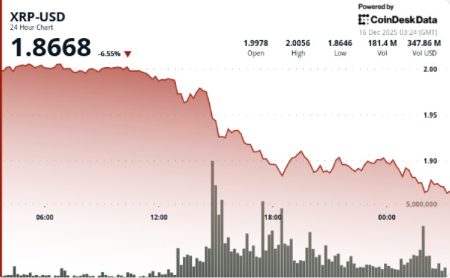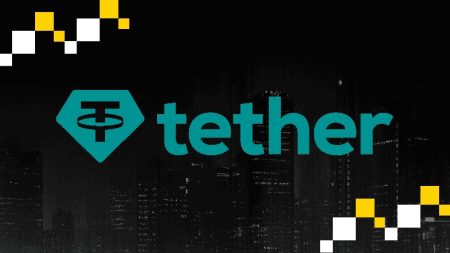XDC Network Acquires Contour Network to Revolutionize Trade Finance Through Blockchain Technology
Banking Technology Giant Makes Strategic Move to Transform Global Trade Settlement
In a significant development for blockchain-based financial infrastructure, XDC Network’s venture arm announced Wednesday its acquisition of Contour Network, a specialized digital platform engineered to help banks streamline trade finance operations through blockchain technology. This strategic acquisition represents a major step forward in bringing blockchain solutions to traditional banking and global trade systems that have historically relied on paper-intensive, time-consuming processes.
Contour Network, which previously boasted backing from banking powerhouses including HSBC, Citi, and Standard Chartered, faced scaling challenges that led to its closure in late 2023. The acquisition by XDC Network breathes new life into the platform, with plans for substantial restructuring that includes fresh capital injection, strategic realignment, and an innovative focus on integrating stablecoins into practical, real-world trade processes. While financial details of the transaction remain undisclosed, industry analysts view the move as potentially transformative for the trade finance landscape.
The Trillion-Dollar Opportunity in Blockchain-Powered Trade Finance
The timing of this acquisition aligns with accelerating interest from global financial institutions in exploring blockchain technology for real-world asset (RWA) tokenization and stablecoin settlement systems. According to a comprehensive report released earlier this year by Ripple and Boston Consulting Group, implementing blockchain technology in trade financing could generate annual savings reaching into billions of dollars. These efficiencies would primarily come from automating traditionally manual processes through smart contracts and enabling programmable digital payments that execute in real-time on blockchain networks.
“The global trade finance system has operated on essentially the same foundation for decades, if not centuries,” explains Dr. Eleanor Harding, international trade economist at Global Finance Institute. “What we’re witnessing with blockchain integration is potentially the most significant modernization of trade infrastructure since the standardization of shipping containers in the 1950s. The efficiency gains could fundamentally alter how global commerce functions.”
XDC Network positions itself as an ideal platform for these innovations, offering an Ethereum-compatible layer-1 blockchain that features impressively fast two-second settlement times and built-in support for ISO 20022 messaging standards—the emerging global language for financial messaging. This technical foundation makes XDC particularly suitable for financial institutions seeking to modernize without completely abandoning established systems and standards.
Strategic Partnerships Driving Blockchain Adoption in Traditional Finance
The acquisition strengthens XDC Network’s growing ecosystem, which already includes strategic partnerships with financial technology leaders like Circle, the company behind the USDC stablecoin, German telecommunications giant Deutsche Telekom MMS, and digital asset securitization platform Securitize. Additionally, XDC has integrated critical frameworks including the Model Law on Electronic Transferable Records (MLETR) and R3 Corda to support sophisticated cross-border financial operations.
“Banks need settlement rails, treasury optimization and compliance frameworks,” said Ritesh Kakkad, co-founder of XDC Network and XDC Ventures, emphasizing the company’s comprehensive approach to solving financial institutions’ blockchain adoption challenges. “We’re building all three.”
Industry experts note that this three-pronged approach addresses the primary concerns traditional financial institutions have expressed about blockchain adoption: regulatory compliance, operational efficiency, and seamless integration with existing systems. By addressing these concerns simultaneously, XDC appears positioned to overcome the adoption hurdles that have slowed blockchain implementation in banking.
Transforming Letters of Credit from Days to Hours
Contour Network’s expertise lies in the digitization of Letters of Credit (LCs), financial instruments that serve as guarantees in international trade transactions. Historically, processing these documents has been notoriously time-consuming, often requiring days of manual verification across multiple financial institutions and jurisdictions.
In previous live implementations, Contour’s blockchain-based system demonstrated remarkable efficiency gains, reducing processing times from multiple days to mere hours. This dramatic improvement addresses one of the most persistent pain points in international trade finance, where delays in document processing can result in significant costs, including extended storage fees, missed business opportunities, and capital inefficiency.
Building on Contour’s established technology, XDC Network aims to offer comprehensive end-to-end digital trade finance solutions that cover everything from initial documentation to real-time settlement. The ambitious project will soon enter a testing phase with regulatory authorities across major financial jurisdictions including the United States, European Union, and key Asian markets, signaling XDC’s commitment to regulatory compliance and institutional adoption.
Stablecoin Innovation Lab Signals New Frontier in Trade Settlement
Concurrent with the acquisition announcement, XDC Ventures unveiled plans for a Stablecoin Lab dedicated to running pilot programs specifically designed for banks and corporate clients. These experimental programs will test the practical application of regulated stablecoins, including Circle’s USDC, for settling trade transactions on blockchain networks with greater efficiency than traditional banking rails allow.
“Stablecoins represent a crucial bridge between traditional finance and blockchain technology,” notes Maria Fernandez, FinTech research director at Global Banking Institute. “They offer the stability of traditional currencies with the programmability and efficiency of blockchain systems. For trade finance specifically, this combination could eliminate days from settlement processes while reducing counterparty risk.”
This innovation comes as Brazil’s VERT Capital recently announced plans to tokenize $1 billion in real-world assets on the XDC Network, highlighting the growing institutional interest in blockchain-based financial infrastructure. The convergence of these developments suggests that the trade finance sector may be approaching an inflection point in blockchain adoption.
Financial industry observers point out that the integration of stablecoins into trade finance represents more than incremental improvement—it potentially enables entirely new business models and financial products that weren’t previously possible. Smart contracts could automatically execute payments when shipping containers reach specific GPS coordinates, or when quality assurance protocols are digitally verified, creating new efficiencies in global supply chains.
The Future of Globalized Trade on Blockchain Rails
As global trade volumes continue expanding despite geopolitical tensions and supply chain disruptions, the need for more efficient financial infrastructure becomes increasingly apparent. XDC Network’s acquisition of Contour Network represents a significant step toward addressing this need through practical blockchain implementation rather than theoretical use cases.
The industry will be watching closely as XDC integrates Contour’s technology and begins regulatory testing across major jurisdictions. Success could trigger a broader wave of adoption across the financial services industry, while challenges could inform future iterations of blockchain-based trade finance solutions.
What remains clear is that the traditional paper-based systems supporting international trade are gradually giving way to digital alternatives. With trillions of dollars in global trade flowing annually, even incremental improvements in efficiency translate to substantial economic benefits. As XDC Network’s Kakkad emphasized, the company is building comprehensive solutions addressing the three critical needs of modern banking infrastructure: settlement, optimization, and compliance.
For financial institutions still evaluating blockchain adoption strategies, the XDC-Contour combination provides a compelling case study in how traditional banking functions can be enhanced rather than replaced by distributed ledger technology. As regulatory frameworks continue evolving to accommodate these innovations, we may be witnessing the early stages of a fundamental transformation in how global trade is financed, secured, and settled.












